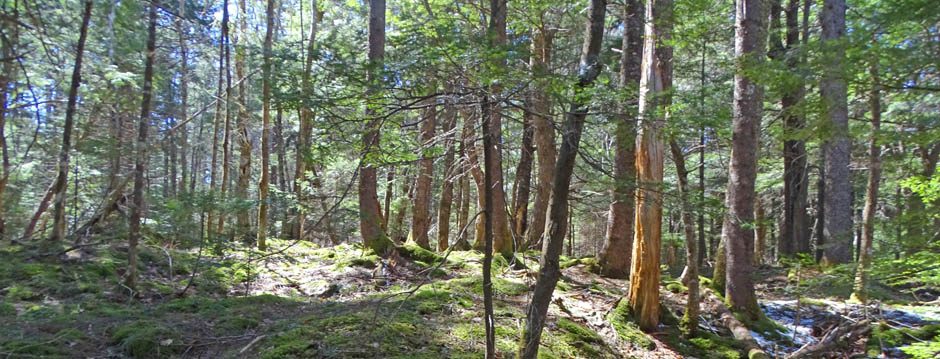Received Dec 23, 2022 in a Newsletter from Gretchen Fitzgerald, National Programs Director, Sierra Club Canada Foundation. It provides a quick overview of the outcomes of COP-15, with some local context.
According to Sierra Club Canada President, Ole Hendrickson, who was on the ground with fellow Directors Lauren Scott and Owen Stewart in Montreal for meetings on COP15, the Kunming-Montreal Global Biodiversity Framework negotiated in Montreal this week was “a significant achievement– not transformative, but not quite “business as usual.”
Good to hear. And good to know that those pushing for change inside the room and outside of it managed to shift the ground in favour of life on Earth.
This same week, the Nova Scotia government gave permission to the power utility in Nova Scotia to burn more forest to generate electricity – because without it NS Power would not meet its so-called renewable energy targets.The government wishes to appease the powerful forest industry, even though burning forests for electricity is as bad, if not worse, for the climate than burning coal. Read more about this from our Beyond Coal team here in a report from the National Observer.
Forests in Nova Scotia, like many parts of our country, have been heavily degraded, leading to losses in biodiversity across large parts of the landscape. A 2022 study showed clearly that the cycle of clearcutting – spraying pesticides – replacing the diverse mixed forests with softwood monocultures – clearcutting is hurting birds that live there. The study linked this degraded landscape to declines in 64% of over 50 of the most common bird species found in the Wabanaki or Acadian forest. For nine of these species, declines are so drastic they meet the criteria for listing as threatened under Canada’ s Species At Risk Act.
Ironically the decision fell just a day after the Christmas bird count where my team was fortunate to spot the golden crowned kinglet, one of the species which has lost the most habitat to degraded forests, according to the study. At the rate of destruction of forests, who knows if we will see this bird next time.
Approving more forest biomass harvesting makes the twin crises of climate change and biodiversity loss even worse. And the fact that governments can claim to be dealing with climate and protecting nature while making such decisions means that the stories being told about environmental leadership need to change. And clearly there is a long way to go before the transformative change needed and spoken of at COP15 becomes a reality.
You can help though! In 2023, we will continue our vital work to protect local ecosystems while at the same time ensuring our global environment is protected as well. You’ll receive mailers soon on how to support us as we go into the new year and next year will see even more actions you can take part in aimed at protecting and preserving our environment for all.
Thank you once again for being part of our resilient and powerful community of life.
Onward,
Gretchen
P.S. We depend upon support from people like you to keep up the fight for our environment. Please consider donating here today!
Here is an excerpt from Ole’s final report from COP15:
“The Global Biodiversity Framework (GBF) is a significant achievement. It’s not transformative, but not quite “business as usual.” It
– recognizes the rights of indigenous peoples, and the “different value systems” many hold, including several references to Mother Earth, and one reference to “rights of nature and rights of Mother Earth;”
– calls for “the full protection of environmental human rights defenders;”
– contains a “30 by 30” target of protecting 30% of lands and seas by 2030; and
– acknowledges the “benefits from green and blue spaces in urban and densely populated areas.”
However, the Global Biodiversity Framework (GBF):
– does not call on national governments to restrict corporate activities that harm biodiversity;
– essentially allows unfettered development outside protected areas;
– encourages “sustainable intensification”, which will allow continued use of harmful means of food, fiber and fuel production;
– lacks effective provisions to address climate change impacts; and
– lacks effective means of ecosystem restoration (and does not recognize that Mother Earth will heal herself if allowed to).
The GBF monitoring framework creates a blueprint for national action, particularly for targets with indicators for which monitoring methodology currently “does not exist”, including restoration, reducing pesticide use, measuring how businesses are reducing their impact on biodiversity and how biodiversity loss places them at risk, and a long list of national indices that countries can use.
Despite the claim that the aim of the GBF is to be a catalyst for transformative action, this will not occur without major additional efforts, including national legislation. The GBF can be used to “halt and reverse” biodiversity loss only if it, along with its gaps and deficiencies, are addressed by national action within Canada.
Two other potentially important COP-15 decisions – one on biodiversity and climate change, and another on mainstreaming biodiversity — were gutted by Brazil near the end of the meeting. This adds to the problem that the twin biodiversity and climate crises are being addressed ineffectively, in silos. This is being exploited by corporations and governments (globally and nationally) to delay action.
– Ole Hendrickson
Chair, National Conservation Committee
President, Sierra Club Canada Foundation
